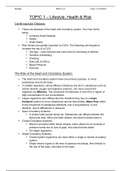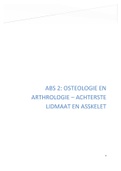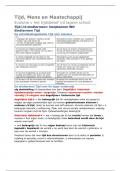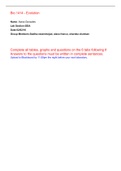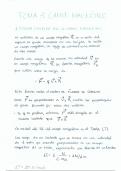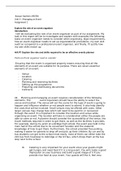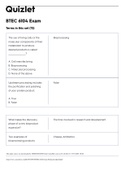Unit 8 Assignment A – Musculoskeletal system Add your name here!
ASSESSMENT RECORD SHEET
BTEC RQF Foundation
Programme Title Diploma in Applied Learner Name Younis Al korashi
Science L3
Assignment Title Musculoskeletal system Assessor Name Add your teachers name here
Targeted Learning
Unit or Component Unit 8:Physiology of the
Aims/Assessment A.P1, A.P2, A.M1, A.D1
Number and Title Human body system Criteria
First Submission
Deadline 11-11-2021 Date Submitted Add the date you submit here
Has an extension to the deadline been approved by the Assessor due to
extenuating circumstances?
Targeted Criteria
Assessment comments
criteria achieved
P1 Y
P2 Y
M1 Y
D1 Y
General comments
I certify that the evidence submitted for this assignment is my own. I have clearly
Learner Declaration referenced any sources used in the work. I understand that false declaration is a form
of malpractice.
Learner signature Confirmed Electronically Date
I certify that to the best of my knowledge the evidence submitted for this assignment is
Assessor declaration the learner’s own. The learner has clearly referenced any sources used in the work. I
understand that false declaration is a form of malpractice.
Assessor signature Date
Date of feedback to learner – this must be within a timely period of the
assessment taking place
Resubmission
authorisation Date
by Lead Internal Verifier*
* All resubmissions must be authorised by the Lead Internal Verifi er. Only one resubmission is possible per assignment, providing:
● The learner has met initial deadlines set in the assignment, or has met an agreed deadline extension.
● The tutor considers that the learner will be able to provide improved evidence without further guidance.
,Unit 8 Assignment A – Musculoskeletal system Add your name here!
● Evidence submitted for assessment has been authenticated and accompanied by a signed and dated declaration of authenticity by
the learner.
**Any resubmission evidence must be submitted within 15 working days of learners receiving assessment feedback which must be within a
timely period of the assessment taking place.
Resubmission
Deadline Date submitted
Targeted Criteria
Assessment comments
criteria achieved
General comments
I certify that the evidence submitted for this assignment is my own. I have clearly
Learner Declaration referenced any sources used in the work. I understand that false declaration is a
form of malpractice.
Learner signature Confirmed Electronically Date
I certify that to the best of my knowledge the evidence submitted for this
Assessor declaration assignment is the learner’s own. The learner has clearly referenced any sources
used in the work. I understand that false declaration is a form of malpractice.
Assessor signature Date
Date of feedback to learner
Paste your assignment below:
The musculoskeletal system:
The muscular and skeletal systems work together to perform a wide range of movements. The respiratory and
cardiovascular systems are also responsible for supplying nutrients and oxygen to the body, which then
produces energy for contraction.
The human skeleton:
The skeleton, which is the internal framework of the body, is composed of around 270 bones. After some bones
are fused together, the total number of bones decreases to around 206 by adulthood. The skeleton's mass
makes up 14% of the body's total weight and reaches its maximum density around age 21.
, Unit 8 Assignment A –Musculoskeletal system Add your name here!
The skeleton is composed of two main parts: the axial skeleton and appendicular skeleton. The former is the
central core unit, and it contains the vertebrae, ribs, skull, and sternum. On the other hand, the appendicular
skeleton consists of the extremities' bones.
The axial skeleton is a component of the skeleton of a vertebrate, and it consists of the trunk and
head of a creature. In humans, the skeleton is composed of 80 bones. The upper portion is composed
of the skull, the lower portion is made up of the ribs, the vertebral column, the ossicles of the middle
ear, and the ribcage. The other bones in the skeleton are the appendicular skeleton and the vertebrae.
An axial skeleton also includes the ribs, coccyx, sacrum, and skull.
Structure: -
The flat bones of humans are known to house various vital organs, such as the brain. It is composed of
81 bones, and it connects the pelvis to the body. As the skeleton grows older, it starts to weaken,
except for the skull, which helps protect the brain from injury.
The axial skeleton: -
Human Skull: -
The skull is composed of the facial bones and the cranium. The cranium is responsible for protecting
and holding the brain in a large space known as the cranial vault. Eight plates connected by sutures
are the bones that make up the cranium. There are also 14 facial bones that form the lower front
portion of the skull.
The 22 bones that make up the skull form smaller spaces beside the cranial vault, and these include
the cavities for the mouth, nose, eyes, and ear. The most important facial bones are the mandible, the
upper jaw, the cheekbone, and the nasal bone.
When humans were born, they had separate plates that eventually fuse to allow the skull to move
through the birth canal and pelvis. During their development, the eight plates that make up the
immature bones fuse together to form a single structure known as the skull. The only bone that
remains that is not part of the skull is the mandible.
Rib cage: -
The rib cages are made up of 12 pairs of ribs and the sternum, and they function as protection for
various organs, such as the lungs and heart. The ribs are shaped like crescents and have rounded and
flat ends. These are connected to joints at the back and at the front by the sternum.
The seven upper ribs attach to the sternum using costal cartilage, and these are referred to as true
ribs. The eighth to 10th ribs have non-coal cartilage, which connects them to the ribs over. These are
referred to as false ribs. The last two ribs, which are called floating ribs, are not connected to the
sternum and are simply "hang free." The length of each rib increases and decreases until it reaches the
12th rib. The first rib, which is the shortest and most curved, is regarded as the queen of ribs.





